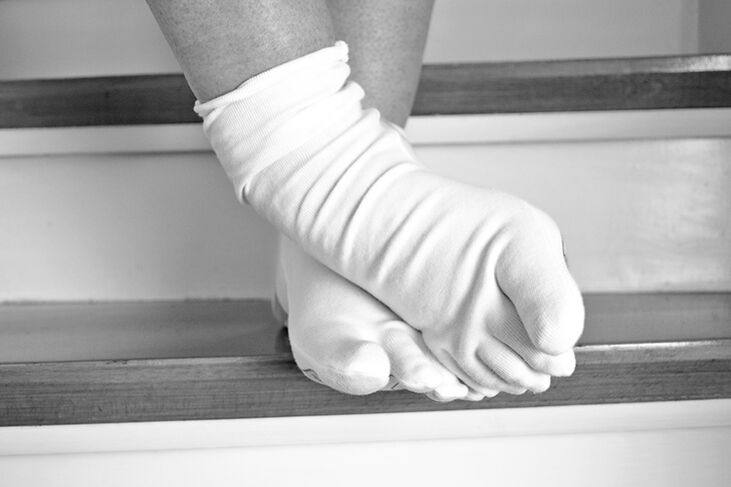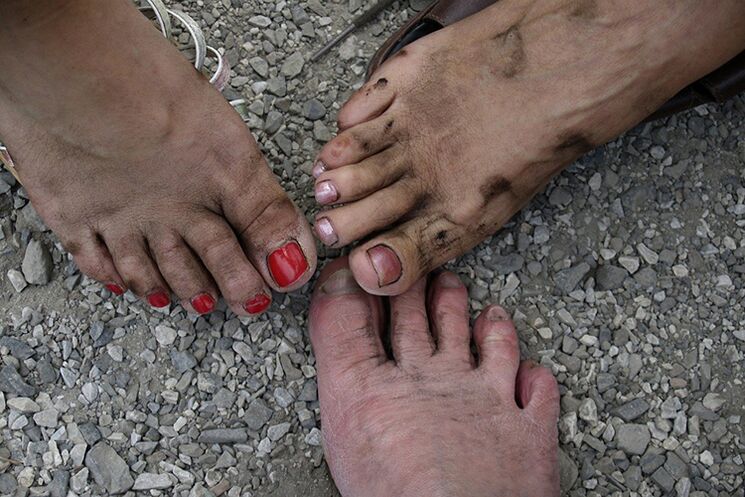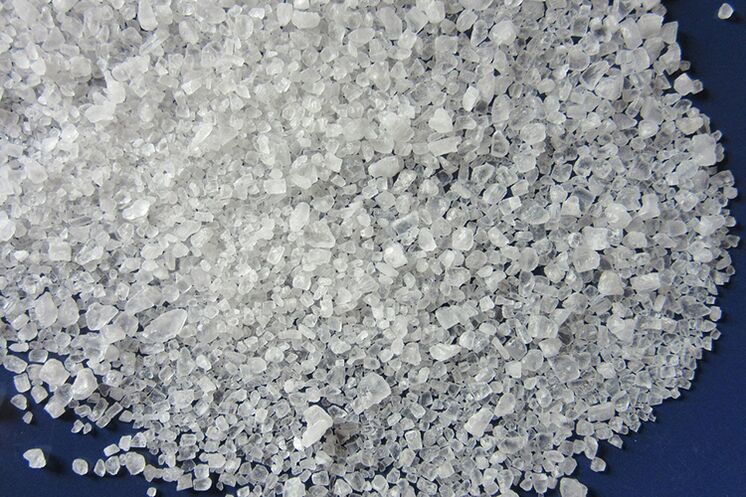Skin mycoses are a common group of diseases. Patients don't always take them seriously enough, leading to advanced forms of the pathology that are difficult to treat. Fortunately, there are many ways to get rid of fungal infections on your feet and get rid of the nasty disease like fungal infections on toes and feet.
Patients don't always take them seriously enough, leading to advanced forms of the pathology that are difficult to treat. Fortunately, there are many ways to get rid of fungal infections on your feet and get rid of the nasty disease like fungal infections on toes and feet.
Skin mycosis between the fingers - how does the disease occur?
Skin mycosis is an infectious disease caused by fungi that parasitize the skin. They can appear anywhere on the body. But most of the time they choose skin folds. The spaces between the toes are her favorite place. This is due to the fact that the legs often sweat, and in tight shoes the moisture does not have time to evaporate. As a result, the spaces between the fingers are often wet and damp. And these conditions are exactly what the fungus needs to reproduce. It's not uncommon for the fungus from infected nails to invade the hollows between the fingers.
Contribution to the development of skin diseases:
- inadequate foot hygiene, overheating or hypothermia;
- Predisposition to increased sweating;
- poor blood flow to the foot associated with heart disease, smoking, diabetes mellitus;
- Stress;
- Calluses and cuts on the skin of the feet;
- Lack of vitamins and minerals (mainly zinc) in the body;
- trophic ulcers on the leg;
- hormonal imbalance and thyroid disease;
- Obesity;
- excessively dry skin.
However, in most cases, fungus will not develop between the toes if the person has healthy immunity.
The disease is more common in men because of the frequent use of tight shoes. Fungi on the legs can appear not only in adults, but also in children.
Skin mycoses between the toes are caused in 90% of cases by the activity of three types of fungi belonging to the group of Dermatomycetes - Trichophyton, Microsporum, Epidermophyton. The skin in the interdigital spaces is also often attacked by fungi of the genus Candida.
Most often, the infection first develops in the cavity between the two smallest toes. However, other interdigital spaces can also be affected. Once on the skin, the fungus actively multiplies on it. The remains of the stratum corneum of the skin serve as food for microorganisms.
A skin infection can be transmitted from person to person. A simple contact of the skin of the foot with surfaces containing fungi is sufficient for this. The transmission of the pathogen can occur with the help of shoes, socks, towels and a wet floor in someone else's shower room. It is necessary to carefully monitor personal hygiene and use only personal items. Personal or disposable slippers and flip flops should be used in swimming pools, showers, spas and saunas.

Often times, a skin disease is passed from one family member to another by walking around the house with the same shoes, pedicures, socks, towels, bare feet, etc.
Symptoms of a fungal infection on the skin of the feet.
Symptoms of mycosis of the feet at an early stage:
- Itching and burning, worse at night;
- Dryness;
- Peeling the skin;
- small cracks.
As the disease develops, symptoms intensify, itching and burning sensation become unbearable, lead to scratches and skin irritation, cracks become deeper. The skin of the feet becomes rough. Pain appears, an unpleasant smell that does not go away even after washing, edema and hyperemia, there is a peeling of the epidermis.
Then bubbles filled with serous fluid appear. After opening, non-healing, festering ulcers remain on the skin. A bacterial connects the mycotic infection.
Peeling of the nails, abscesses may appear. A complication of mycosis of the feet can include the fungus entering the bloodstream and spreading the infection throughout the body. At the same time, the body temperature rises. Gangrenous lesions of the feet can also develop. Cardiovascular diseases, immunodeficiency states and diabetes mellitus make the course of skin diseases more difficult.
To diagnose mycosis of the feet, it may not be enough for a doctor to examine the skin. Often it is necessary to analyze the composition of the skin microflora. For this purpose, the affected surface is scraped off. The fungus can be found on the skin even when there are no visible symptoms of infection.
There is also a popular method for determining the presence of a fungus on the leg. To do this, you need to put your foot in a potassium permanganate bath. If there is no fungus on the skin, it will turn pink and the affected areas will turn white.
How to remove fungus between your toes?
Getting an infection on your skin is very easy, but getting rid of it is a lot harder. Skin mycoses are always treated at home, but this does not mean that completely independent treatment will definitely help the patient. In any case, medical advice is required.
There are many antifungal drugs that are effective in killing the fungus. However, the success of treatment largely depends on the stage of the disease. If it has gone too far, the infection will be difficult to get rid of. In the initial stage, external antifungal drugs are used. If the disease already exists, doctors recommend systemic treatment. Most often, terbinafine, itraconazole and fluconazole are prescribed in the form of tablets.
Popular antifungal drugs:
- Nystatin,
- Fluconazole,
- Ketoconazole,
- Clotrimazole,
- Terbinafine,
- naftifine,
- Miconazole,
- Itraconazole,
- Natamycin.
Some antifungal ointments also contain anti-inflammatory ingredients.
The way of applying all ointments is the same - they need to be regularly applied to the affected areas of the skin with a thin layer. Some ointments are sufficient to be used once a day, while others require more frequent use. Antifungal sprays that can be sprayed on the affected area are even more convenient than ointments.
Treatment with antifungal ointments can be lengthy. Certain types of ointment can clear the infection after 2 weeks. However, if the damage is severe, the duration of treatment can be up to 3 months. Doctors advise applying the ointment at least 2 weeks after the visible symptoms of the disease have passed. And every six months it is necessary to lubricate the toes with ointments as a preventive measure.
Systemic antifungal drugs can also be used for severe infections. However, they have a long list of contraindications and side effects. In particular, pills for fungus are contraindicated in pregnant women. Many skin ointments are also prohibited during pregnancy. If it is necessary to use such topical preparations, a doctor must be consulted. Not all drugs are allowed in childhood. Therefore, you need to read the instructions for the selected tool. Some medicines can be used from 2 years of age, others from 12 years of age.
A specialist should choose the right drug. Incorrect use of antifungal drugs not only does not relieve the patient of pathogenic microorganisms, but can also lead to the development of resistance (especially in conditions where the patient is constantly re-infected). The toxins secreted by many fungi suppress local immunity, which contributes to the further development of the infection.
In addition, vitamin and mineral complexes are taken. If the disease is complicated by bacterial infection, the doctor will prescribe antibiotics, but if there are signs of allergy, antihistamines will be prescribed. Treatment can be supplemented with anti-inflammatory ointments, salicylic, sulfur, ichthyol and zinc ointments.
Salicylic ointment:
- has antiseptic properties,
- prevents keratinization of the skin,
- promotes the restoration of the epidermis,
- prevents the spread of infections.
The zinc ointment contains lanolin, menthol, zinc oxide. Zinc ointment has disinfecting properties, promotes skin regeneration, relieves itching and burning.
Sulfur ointment has anti-inflammatory, emollient and disinfectant properties. Ichthyol ointment has a keratolytic, anti-inflammatory and bactericidal effect. Ichthyol ointment also promotes tissue regeneration.
Also, don't forget about foot hygiene. It is necessary to give up tight, uncomfortable shoes, synthetic socks and stockings, and regularly change insoles. Shoes must be disinfected with antifungal sprays. In fact, if the patient's skin is constantly infected with new parts of the fungus that lives in the shoes, the treatment will have no effect.
Fungus between the toes: treatment with folk remedies at home
Treatment with pharmaceutical preparations does not always produce the desired effect. Therefore, people turn to folk remedies. This approach is understandable because many synthetic antifungal ointments and sprays are by no means cheap. Treatment with folk remedies can be carried out as a complement to treatment with pharmacy ointments.
The simplest folk remedies to get rid of the fungus are salt and soda baths. To prepare the trays, you will need 2-3 tablespoons of salt or soda per 5 liters. Water. Water temperature - + 40-45 ° C. The duration of the procedure is 15-20 minutes.

One of the best home remedies is an herbal bath with antiseptic properties. It can be chamomile, sage, calendula, nettle, St. John's wort. To prepare the bath, you will need 2-3 tbsp. Plant materials (you can take a mixture of different herbs) insist in a glass of boiling water, strain and put in a 5-liter container with water for a bath. The water should be warm but not burn the skin of the feet. The duration of the procedure is 15-20 minutes.
Many people in the presence of fungus on the skin of the feet are also helped by baths with a solution of potassium permanganate. Only a few grains of potassium permanganate are needed to make a light pink solution. You can also moisten cotton balls with a potassium permanganate solution and place them between your fingers.
Boric acid is also effective in treating the disease. You can use both liquid boric acid and powder. Acid can be added to baths and treated with affected areas.
You can also use a slightly warmed 9% table apple cider vinegar solution for the trays. The duration of the procedure is 15 minutes. You can also make vinegar lotions.
Another recipe is iodine baths. To prepare the solution, it is enough to dilute 20 drops in 3 liters of warm water. The duration of the procedure is 15 minutes, the course of treatment is 2-3 weeks.
After the end of the water treatment, it is necessary to clean the skin of keratinized and flaky tissues. It is recommended to bathe at least once a day, preferably at night.
To treat mycosis of the feet, you can also use ointment with garlic, antidandruff shampoos for the pharmacy with antifungal ingredients, lotions with chlorhexidine and hydrogen peroxide.
Prevention of skin mycoses of the toes
The disease occurs due to non-compliance with the rules of personal hygiene. Therefore it is necessary:
- Do not use any other person's pedicure tools, towels, slippers, socks, or shoes. Do not let strangers use your shoes, socks, and toiletries.
- Observe foot hygiene, wash the skin with soap every day and treat the interdigital spaces carefully.
- Shorten toenails regularly;
- Wear comfortable shoes and socks made of breathable fabric.
- regularly change socks, put on socks that have been washed at a temperature of at least + 40 ° C;
- Exercise to improve blood circulation in your legs.
What's the fastest treatment?
It is impossible to say unequivocally which remedy is the fastest and the best. After all, the effectiveness of therapy for a fungal skin disease depends on many circumstances - the severity of the pathology, the degree of immunity and the presence of concomitant diseases. Some patients are supported by traditional methods, others by pharmaceutical ointments. It is important not to start the disease and start treatment at the first sign. It is also important to identify the type of pathogen. To do this, you need to consult a doctor. Perhaps he will find the best option for the drug.


























